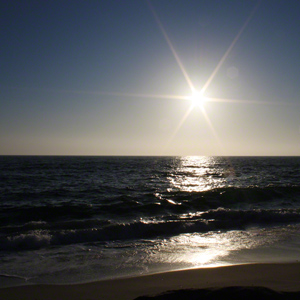Are there two creation accounts?
One criticism of the book of Genesis is that there are supposedly two creation accounts in chapter 1 and chapter 2, and that these two accounts conflict with one another. All issues can be resolved when chapter 1 is seen as a chronological account of creation, whereas chapter 2 provides more details. Some critics will say that Genesis 2:19 has the beasts and birds being created after Adam, but this too is resolved with a proper understanding of context. “There is no contradiction, because in Hebrew the precise tense of a verb is determined by the context. It is clear from chapter 1 that the beasts and birds were created before Adam, so Jewish scholars would have understood the verb “formed” in Genesis 2:19 to mean “had formed” or “having formed”” (Batten, 1990:47-48). So Genesis 2:19 is merely stating where the beasts and birds came from, whereas chapter 1 gives the chronological account.
How long is a “day”?

© Copyright Square One Science
Some creationists who feel pressured by evolutionary theories to believe in an earth that evolved over billions of years try to interpret the 6 days of creation as non-literal days. They use the Bible passage in 2 Peter 3:8 which talks about one day with the Lord being as a thousand years to justify the belief that creation took thousands or millions of years. But the second part of that verse also says that a thousand years are as one day, so this concept cancels itself out (Batten, 1990:45-46). There are many issues with trying to use this verse as a literal time conversion factor. If plants were created millions of years before the birds and insects needed to pollinate them, they would not have survived (Batten, 1990:50). Also, since Adam was created on day 6, if day 7 were millions of years then it would not make sense to say that he died when he was 930 years old in Genesis 5:5 (Batten, 1990:50). This attempt to mesh evolutionary theory with the creation account in Genesis fails miserably. The most proper understanding of 2 Peter 3:8 is that it refers to the timelessness of God, and that the Genesis account refers to 6 literal days.
The most crucial point to understanding the Hebrew word for “day”, which is “yom”, is that when it is qualified by a number it refers to a literal day, otherwise it can refer to a period of time longer than a day. The first time the word “yom” is used to refer to a “day” is in Genesis 1:5, and this refers to a cycle of light and darkness. In Exodus 20:11 the Ten Commandments refer to six days of work and one day of rest as God did it during creation (Morris, 2007:a). Such a reference is most cohesive when the six days of creation are interpreted to be six literal days.
What is an example of the word “yom” referring to a period longer than a day? Genesis 2:4 says that God created the heavens and earth in a day. In this case “yom” is not qualified by a number or definite light and darkness cycle, so it refers to the period of time representing all 6 days of creation (Batten, 1990:49).
How did plants survive before the sun was created?

© Copyright Square One Science
Critics may point to the Genesis creation account and say that there is a problem with plants being created on day 3 when the sun was created on day 4. This is hardly an issue since light already existed since day 1. There are many sources of light other than the sun, such as ultraviolet light, X-rays, infrared light, and even God Himself (Morris, 2008:14). Why would God create the plants before the sun? “Perhaps one reason God did it this way was to illustrate that the sun did not have the priority in the creation that people have tended to give it” (Batten, 1990:44-45). God could sustain the whole plant world by just unveiling a small portion of His eternal light, so there is no reason that plants couldn’t survive before the sun was created.
How could Adam name every animal on earth?

© Copyright Square One Science
Certain critics of Genesis may say that it’s a bit far-fetched to imagine Adam giving names to all the animals, insects, and sea creatures of the world. But a careful reading of Genesis 2:20 will show that Adam gave names to every “beast of the field”, contrasted with the created “beast of the earth” in Genesis 1:25 (Batten, 1990:46). “The phrase “beast of the field” is most likely a subset of the larger group “beast of the earth.” He did not have to name “everything that creeps upon the earth” (Gen. 1:25), or any of the sea creatures” (Batten, 1990:47).
Who did Adam’s sons marry?
Critics of Genesis may ask where did Adam’s sons, like Cain, get their wives? Were there other humans outside of Adam’s family, and if so, where did they come from? The answer is that Adam’s sons married their sisters, and no, there were no humans outside of Adam’s family. This is confirmed by the fact that when Cain was punished God put a mark on him so that if someone found him they wouldn’t kill him. Anyone from any other race of people would not care about killing Cain, so they must have been from the same race (Batten, 1990:138).
Critics will be quick to point out all the genetic problems that arise from incest, but such problems only arose with time as human genes accumulated more and more defects. When Adam was created he had a perfect genetic composition, but after the fall sin and corruption entered the world and mutations slowly started to accumulate in human genes. This is when God forbade incest in Leviticus chapter 18, because from that point incest was and is harmful.
Works Cited
Batten, Don (editor), Ken Ham, Jonathan Sarfati, and Carl Wieland. The Revised & Expanded Answers Book. (23rd printing 2001) Green Forest, AR: Master Books,1990.
Morris, John D. “Does the Phrase “Evening and Morning” Help Define “Day”?” Acts & Facts (Back to Genesis, no.220) 36.4 (2007).
Morris, John D. “Sunlight Before the Sun.” Acts & Facts 37.1 (2008).
